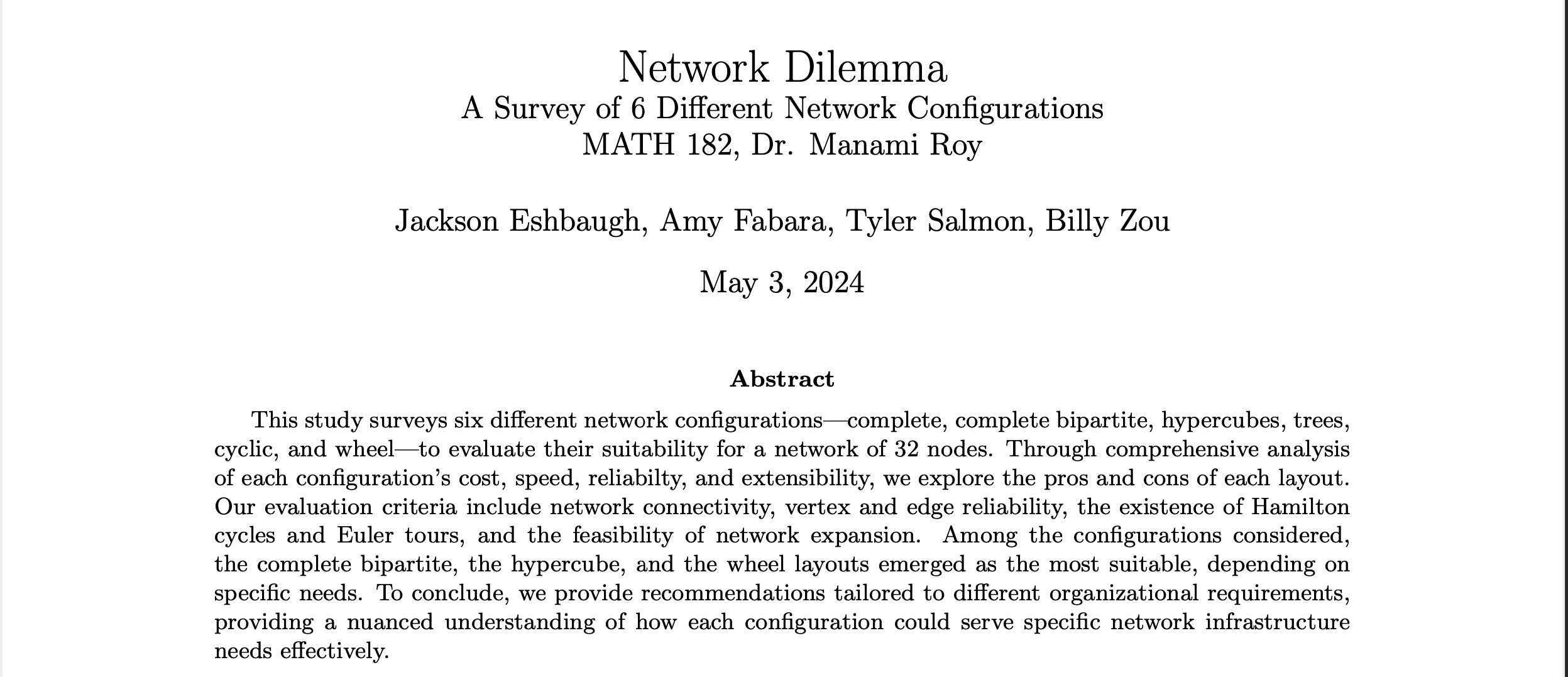Network Dilemma: A Survey of 6 Different Network Configurations
• • •
This study surveys six different network configurations—complete, complete bipartite, hypercubes, trees, cyclic, and wheel—to evaluate their suitability for a network of 32 nodes. Through comprehensive analysis of each configuration’s cost, speed, reliabilty, and extensibility, we explore the pros and cons of each layout. Our evaluation criteria include network connectivity, vertex and edge reliability, the existence of Hamilton cycles and Euler tours, and the feasibility of network expansion. Among the configurations considered, the complete bipartite, the hypercube, and the wheel layouts emerged as the most suitable, depending on specific needs. To conclude, we provide recommendations tailored to different organizational requirements, providing a nuanced understanding of how each configuration could serve specific network infrastructure needs effectively.
Note: The other three authors of this project don’t have any links, but they are still listed here for completeness.



